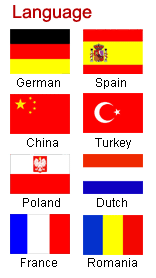

Nepal Apparel Production and Distribution: A Vital Industry for Economic Growth
Nepal Apparel Production and Distribution refers to the intricate process of producing, designing, and distributing clothing items across the country. This process involves sourcing high-quality fabrics, manufacturing garments, and then distributing these items to retailers and consumers both locally and internationally. With a wide array of products ranging from traditional Nepalese garments to modern western-style clothing, Nepal’s garment industry plays a crucial role in the nation's economy.
In recent years, the demand for Nepal-made apparel has seen steady growth, with both domestic and international markets seeking quality and uniqueness in their clothing. The sector not only fuels economic activity but also generates thousands of jobs, providing income for many families and creating a positive impact on the overall socioeconomic structure.
The Economic Impact of Nepal's Garment Industry
Nepal's apparel production and distribution industry is a significant contributor to the country's economy. The industry has evolved over the years, with a surge in demand for both traditional and modern garments. In the 1980s, Nepal’s garment industry experienced a boom, largely driven by Indian exporters seeking alternative production centers. Today, this industry continues to flourish despite global competition.
According to recent data, the apparel market in Nepal generated impressive revenues, with projections indicating continued growth through 2030. In 2018, for instance, the garment industry hit a high, generating approximately NPR 6.34 billion ($84.9 million), marking a 6.52% increase from the previous year. Such growth highlights the potential of Nepal’s apparel sector to contribute to the country's long-term economic development.
Nepal’s Apparel Exports and Global Competition
Although Nepal’s apparel market has seen growth, the country faces tough competition on the global stage. When comparing Nepal’s textiles and clothing exports with those of the U.S., it becomes clear that the scale of Nepal’s industry is relatively smaller. However, Nepal has carved a niche for itself by focusing on high-quality, handcrafted items that attract international buyers seeking unique, ethically produced garments.
The European Union (EU) has become a major destination for Nepal’s clothing exports, with a significant percentage of Nepalese garments being absorbed by this market. This reflects the growing appeal of Nepal-made products in global markets, particularly in countries with a demand for eco-friendly and ethically sourced clothing.
The Current State of Nepal's Apparel Market in 2023
As of 2023, Nepal's apparel market continues to evolve, with new opportunities and challenges shaping the landscape. The readymade garment sector remains a vital component of the industry, with many local and international brands sourcing their products from Nepal. The sector has seen significant growth, buoyed by strong demand for both traditional and contemporary clothing styles.
The market outlook for 2024-2030 suggests a positive trend, with increasing consumer interest in Nepalese garments due to their craftsmanship and sustainable production methods. Additionally, as the global fashion industry moves towards more ethical practices, Nepal’s garment sector is well-positioned to meet this growing demand.
The Future of Nepal’s Apparel Industry
Nepal Apparel Production and Distribution continues to be an integral part of the nation’s economy, providing jobs, generating revenue, and contributing to the country’s economic growth. With a robust market forecast, the future of the industry looks promising. By focusing on quality, sustainability, and expanding its reach to international markets, Nepal's apparel industry is poised for continued success in the years to come.






- Razor cut hippy clothing for modern trendy womens and girls
- Nepal handmade 925 sterling silver Jewelry
- Felt wool products bags shoes felt accessories and much more
- Tibetan Singing Bowls, Antique, Carving and Itching
- Felt accessories, felt shoes and felt wool handmade products
Nepal Apparel Production and Distribution refers to the intricate process of producing, designing, and distributing clothing items across the country. This process involves sourcing high-quality fabrics, manufacturing garments, and then distributing these items to retailers and consumers both locally and internationally. With a wide array of products ranging from traditional Nepalese garments to modern western-style clothing, Nepal’s garment industry plays a crucial role in the nation's economy.
In recent years, the demand for Nepal-made apparel has seen steady growth, with both domestic and international markets seeking quality and uniqueness in their clothing. The sector not only fuels economic activity but also generates thousands of jobs, providing income for many families and creating a positive impact on the overall socioeconomic structure.
The Economic Impact of Nepal's Garment Industry
Nepal's apparel production and distribution industry is a significant contributor to the country's economy. The industry has evolved over the years, with a surge in demand for both traditional and modern garments. In the 1980s, Nepal’s garment industry experienced a boom, largely driven by Indian exporters seeking alternative production centers. Today, this industry continues to flourish despite global competition.
According to recent data, the apparel market in Nepal generated impressive revenues, with projections indicating continued growth through 2030. In 2018, for instance, the garment industry hit a high, generating approximately NPR 6.34 billion ($84.9 million), marking a 6.52% increase from the previous year. Such growth highlights the potential of Nepal’s apparel sector to contribute to the country's long-term economic development.
Nepal’s Apparel Exports and Global Competition
Although Nepal’s apparel market has seen growth, the country faces tough competition on the global stage. When comparing Nepal’s textiles and clothing exports with those of the U.S., it becomes clear that the scale of Nepal’s industry is relatively smaller. However, Nepal has carved a niche for itself by focusing on high-quality, handcrafted items that attract international buyers seeking unique, ethically produced garments.
The European Union (EU) has become a major destination for Nepal’s clothing exports, with a significant percentage of Nepalese garments being absorbed by this market. This reflects the growing appeal of Nepal-made products in global markets, particularly in countries with a demand for eco-friendly and ethically sourced clothing.
The Current State of Nepal's Apparel Market in 2023
As of 2023, Nepal's apparel market continues to evolve, with new opportunities and challenges shaping the landscape. The readymade garment sector remains a vital component of the industry, with many local and international brands sourcing their products from Nepal. The sector has seen significant growth, buoyed by strong demand for both traditional and contemporary clothing styles.
The market outlook for 2024-2030 suggests a positive trend, with increasing consumer interest in Nepalese garments due to their craftsmanship and sustainable production methods. Additionally, as the global fashion industry moves towards more ethical practices, Nepal’s garment sector is well-positioned to meet this growing demand.
The Future of Nepal’s Apparel Industry
Nepal Apparel Production and Distribution continues to be an integral part of the nation’s economy, providing jobs, generating revenue, and contributing to the country’s economic growth. With a robust market forecast, the future of the industry looks promising. By focusing on quality, sustainability, and expanding its reach to international markets, Nepal's apparel industry is poised for continued success in the years to come.
- Razor cut hippy clothing for modern trendy womens and girls
- Nepal handmade 925 sterling silver Jewelry
- Felt wool products bags shoes felt accessories and much more
- Tibetan Singing Bowls, Antique, Carving and Itching
- Felt accessories, felt shoes and felt wool handmade products


































